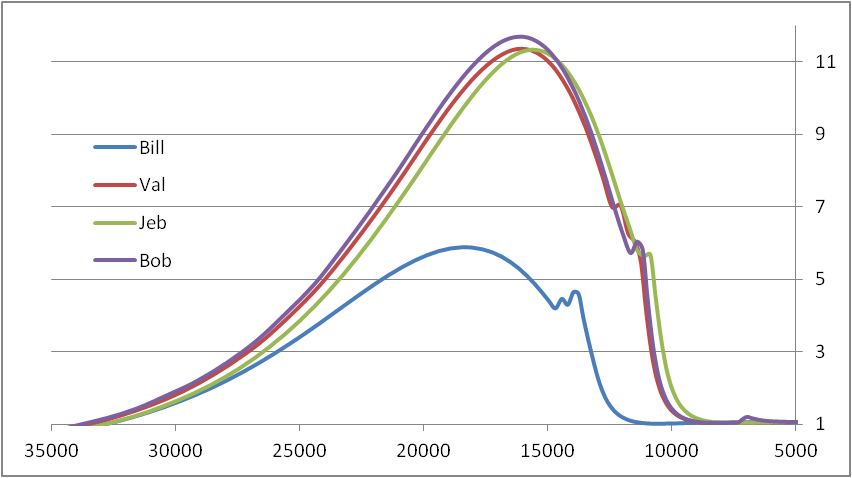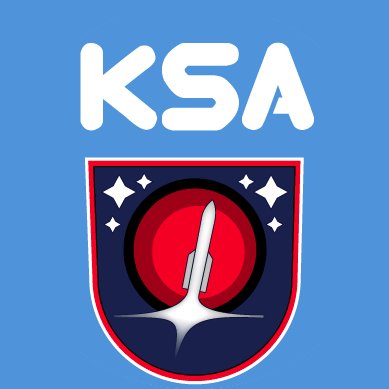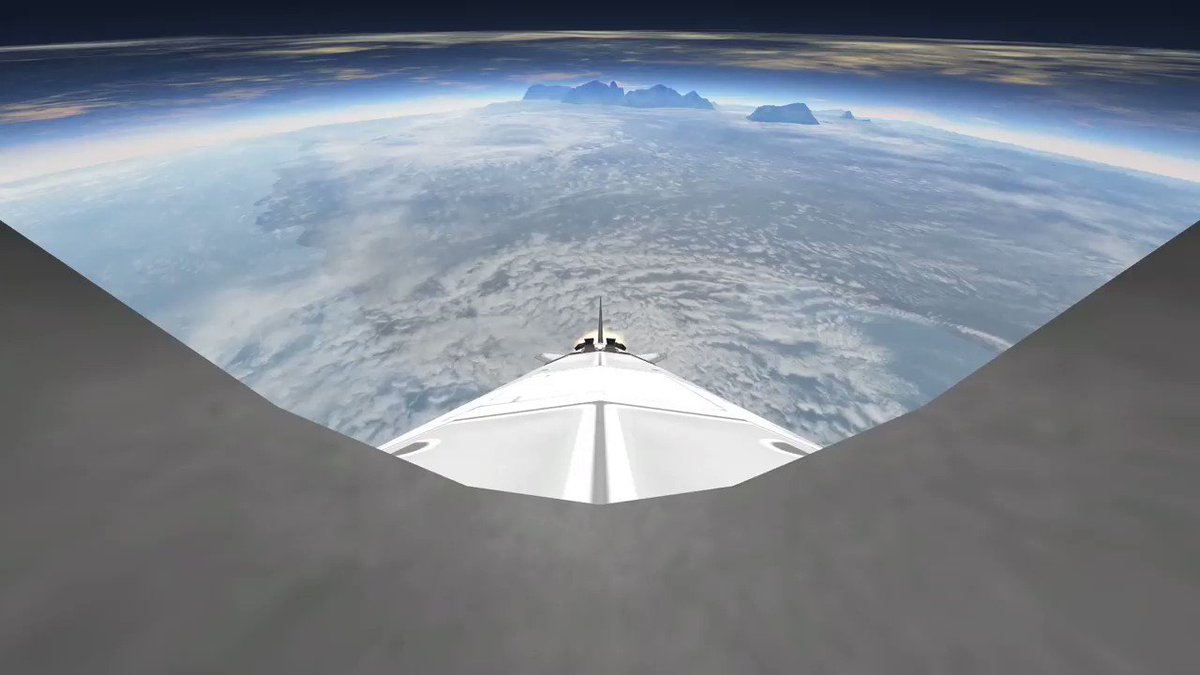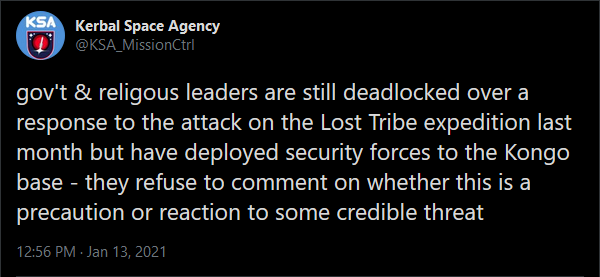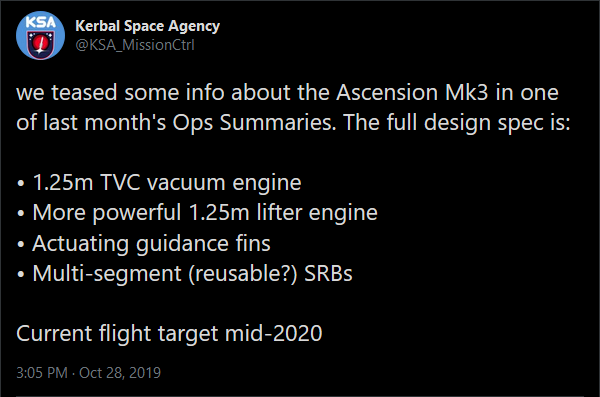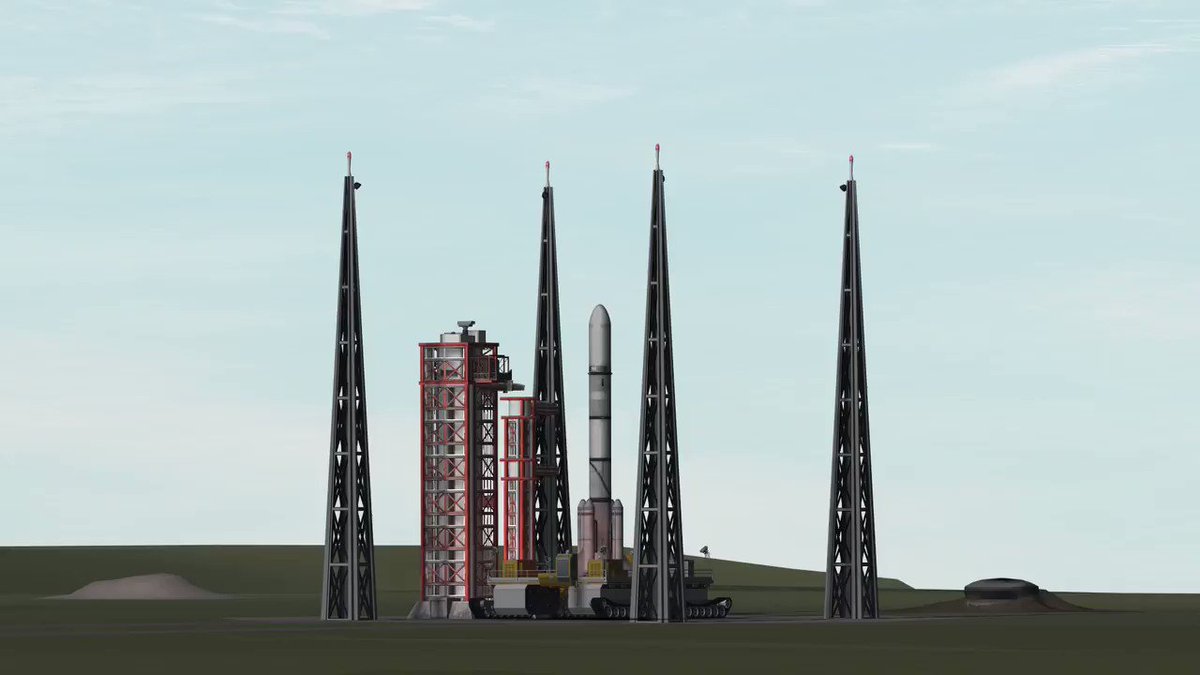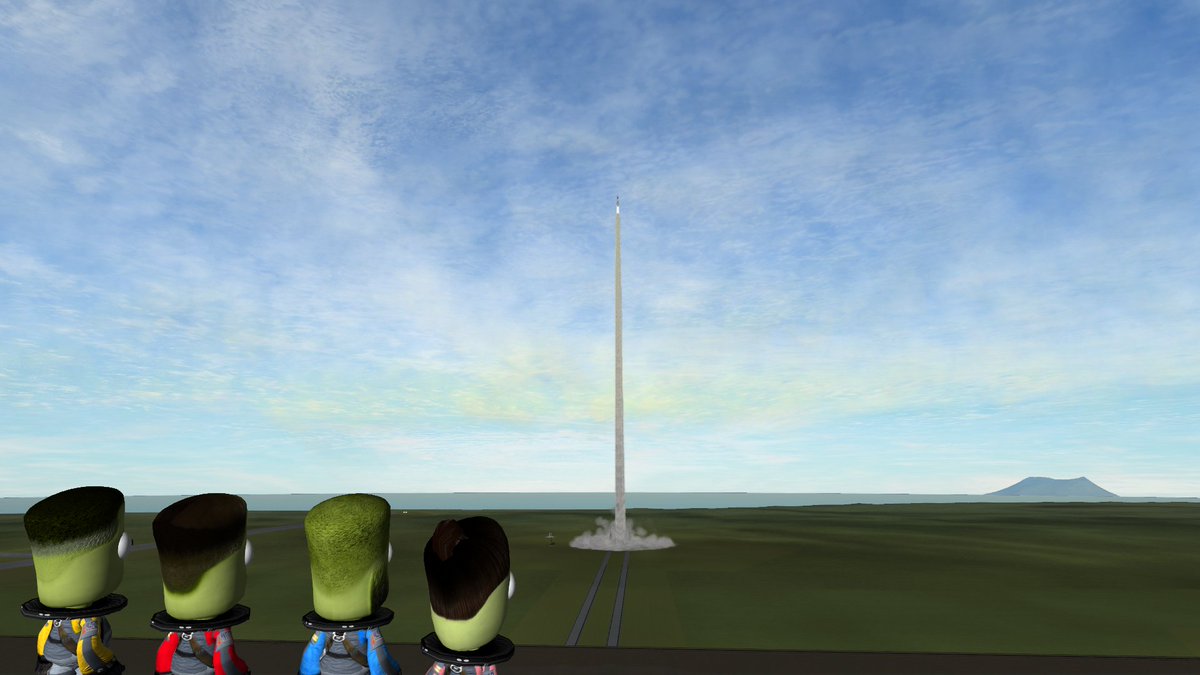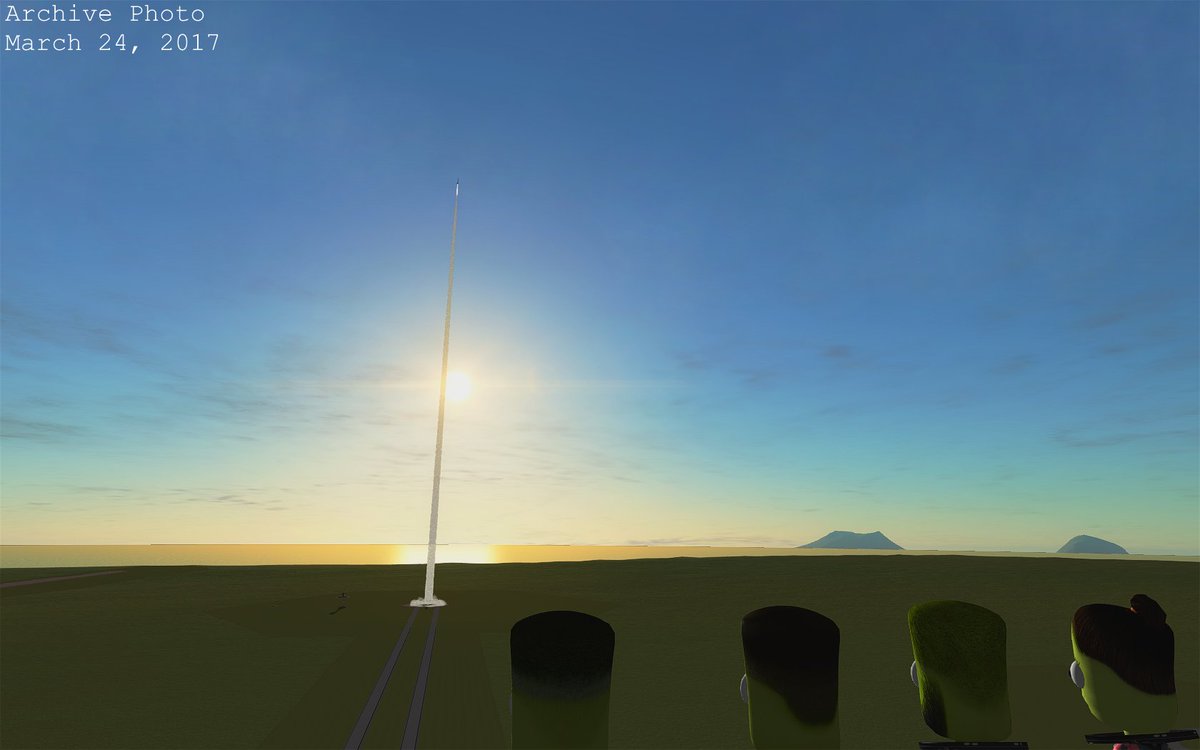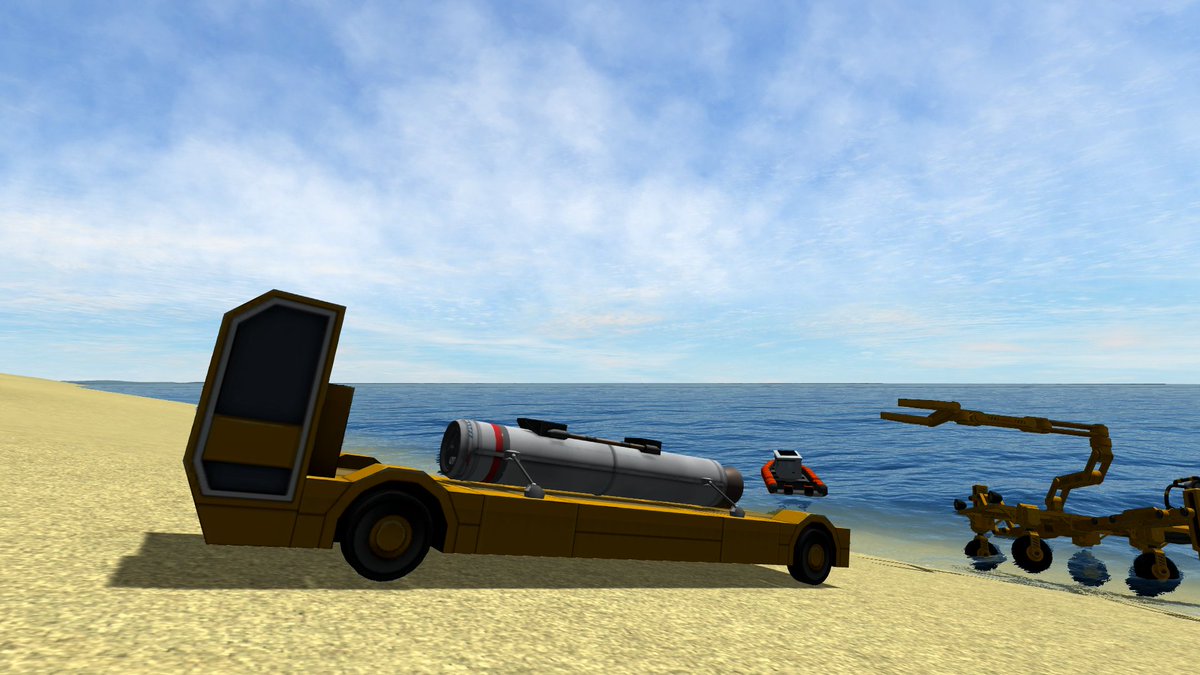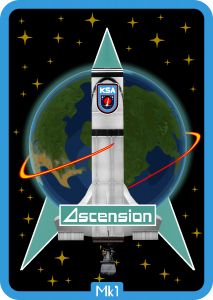 Specialist Bob has had quite the long journey to get up into space. He was supposed to be the first to take the trip however the Monolith had other plans for our initial orbital attempt, which can be read about in more detail here. Nearly one year later his rotation finally came back around after first Bill then Val then Jeb all took turns flying up above the atmosphere. Always the one on the crew list with the most nerves, having 3 other kerbals return safely from space helped to put him at ease, although at the same time he couldn’t help but wonder if that meant he would be the one to not come back alive. Despite his anxiety, Bob got straight on board the rocket on launch day and retained his composure throughout the mission, despite the problems that were had.
Specialist Bob has had quite the long journey to get up into space. He was supposed to be the first to take the trip however the Monolith had other plans for our initial orbital attempt, which can be read about in more detail here. Nearly one year later his rotation finally came back around after first Bill then Val then Jeb all took turns flying up above the atmosphere. Always the one on the crew list with the most nerves, having 3 other kerbals return safely from space helped to put him at ease, although at the same time he couldn’t help but wonder if that meant he would be the one to not come back alive. Despite his anxiety, Bob got straight on board the rocket on launch day and retained his composure throughout the mission, despite the problems that were had.
The Flight
With no issues in the countdown, the ignition sequence began at T-6s to fire up the main engine and check chamber pressures as it throttled to launch thrust of 1.2 TWR. Clamp release was approved as the AFCS confirmed launch thrust and the rocket began its ascent, holding throttle steady until it had climbed over the towers. The rocket began to roll from 45° to launch heading of 54° but at L+6s the guidance computer decided that it was also supposed to be holding a 45° pitch angle and kicked the rocket hard over while still less than 500 meters over the ground. Needless to say this caused quite the commotion in launch control!
No auto-abort was triggered by the Flight Termination System, so controllers were confident the rocket still thought it was in control, even if it was not behaving as expected. It was still pointed downrange, still climbing and accelerating so they ultimately had Val on CapCom tell Bob the decision remained his – at any point if he felt uncomfortable the Launch Escape System toggle was on his control panel. He had already flipped up the switch cover.
Although it must have felt to Bob like an eternity had passed it was still only L+20s and while the rocket had managed to pitch over to 45° thanks to being nose-heavy it was still traveling too slowly for air pressure to allow the fins to hold this angle. The rocket slowly began to fall over more towards horizontal, which also increased the risk of using the LES safely. By L+27s the rocket was at only 1.4km traveling at 267m/s and had begun to slowly bring its nose back up from dropping as low as 32° (30° would have been the point Bob had triggered the LES).
Only 45 seconds still into the flight Bob’s decision making continued to be tested as the rocket’s speed created enough lift at the nose to over-compensate the pull-up maneuver and bring its attitude up to as high as 57° to create a potentially dangerous angle of attack. While that did not last long enough to over-stress the rocket, soon after that problem stabilized by L+50s another potential danger was overspeed – traveling so much closer to horizontal than planned had increased dynamic pressure to levels unseen for kerbed flights. The rocket finally broke through Max Q at L+58s straining under a massive 68.653kPa while nearing Mach 2.
It is now 1 minute into the flight and Bob is being thrown around inside the capsule as supersonic turbulence rocks the ship. At this point he is committed – punching the LES wouldn’t be any worse than the ship breaking apart to fling the capsule free anyways and he’s not able to hit the switch due to amount of violent shaking throwing off control of his arms.
L+1m20s, Bob is finally above 18km and in the upper atmosphere. With half the density of the lower atmosphere and falling quickly, the roll-shaking is beginning to gradually calm down but the outside air is quickly heating up from the friction of his passing as the rocket screams along at nearly 1km/s and climbing. With the external capsule temperatures reaching near 700°F (371°C) the ECLSS was working hard to maintain a comfortable cabin temperature. Needless to say, Bob was sweating from more than just anxiety.
18s later Val happily informed Bob, who was passing through 30km but could still not clearly read his instruments due to the shaking, that he was making it to space as the rocket’s apokee surpassed the 70km boundary of the atmosphere. Given the option to keep the throttle pulled back to 2.7 TWR and ease the remainder of his ascent, Bob told controllers he still wanted to go for the records, so a few seconds later at L+1m51s the computer kicked the engine up to max thrust of 195kN in the final push through the rarefied upper atmosphere, pressing Bob back against his seat with an initial force of just over 4Gs, climbing to 5Gs by the time main engine cutoff arrived at L+2m6s.
The capsule was released from the lift stage and pushed clear via the Reaction Control System 10s later just as Bob was clearing the atmosphere and becoming the 4th kerbal to ever enter space. While controllers on the ground scrambled to determine his new landing location Bob was free to unstrap and float up to the window for a better look down upon the planet he had just escaped from, if only briefly. As planned, the expansive shadow of Mun was visible below as it raced across the Kerblantic trying to catch up with him. He had full control of the RCS to use the cold gas thrusters and orient his capsule any which way he wanted for the best views. Climbing to an apokee of 294.112km at L+9m8s he successfully bested Val’s earlier record of 251.907km. By the time he returned to the atmosphere he had also spent a record 13m36s in space to also beat out Val’s 11m2s.
Prior to hitting the top of the atmosphere at L+15m56s Bob had strapped back into his seat, oriented the capsule retrograde to point the heat shield down and put it into a lazy spin so that heat would remain evenly distributed and not potentially cook off the radial backup chutes up near the top. Controllers had already determined he was coming down over a large island east of Ockr, so the use of the LES to alter his landing location was not necessary and the tower was jettisoned during re-entry. Coming down over land was not how the capsule was supposed to return, however the benefits of waiting hours on land for the recovery ship to relocate to the new location versus floating in potentially rough waters (as well as drifting away from the original landing area) far outweighed any of the potential risks that were considered during Bob’s space arc.
Communication was lost at L+16m16s as the capsule entered comm blackout due to the plasma generated by the shock wave of the capsule slamming down through the atmosphere at over 2km/s. Before signal could be regained the capsule dropped below the horizon out of sight of the Ockr Relay, however Bob had been briefed prior to re-entry on his landing rather than splashdown. During re-entry he experienced the highest G-load ever recorded, peaking at 11.4G, and actually blacked out for nearly 25s. After the chutes deployed automatically at L+16m52s and he had recovered his senses Bob also triggered both of the backup radial chutes and disabled the decoupler latches on the heat shield. This was done to bring the capsule down more gently with the heat shield sacrificed to absorb the landing impact as hitting the ground would be more violent than landing in the water.
The capsule safely touched down 907.405km downrange (another record) at L+23m1s still traveling at a decent clip of 4.452m/s but as planned the heat shield took up the majority of the impact, crumpling to save Bob from any injury (later Bob referred to the landing as a “kersplat!”). Luckily despite some potentially dangerous slopes on the island the capsule landed on the interior lowland areas. Despite his earlier incapacitation Bob was able to climb out of the capsule and also become the first kerbal to plant a KSA flag on the surface after returning from space.
Flight Analysis
Ascent Guidance Error
It took a good deal of time to track down this error, even though we knew right off the bat where the problem resided because the flight log included an output from this routine. This was supposed be keeping track of the rocket’s pitch angle so that later in the ascent as it approached the final 45° hold point the rocket would not surpass it, or if it reached it too soon it would still hold attitude. Why the rocket thought so early on that it was not pitched properly has been determined to be due to the fact that we re-use control cores for launches and have not been doing full memory wipes in between. This meant previous launch data was still stored in non-volatile memory and a memory addressing issue in the base code caused the lastPitch variable to read from a previous launch value. We are still working to fix the memory address issue as that is a deeply-rooted problem but in the meantime full core memory wipes will prevent an issue like this from happening again.
Despite the violent maneuver the Flight Termination System did not automatically trigger the LES because the guidance computer was not detecting an “off-nominal” condition as it thought it had reached a later stage of the ascent. The rocket thankfully did not flip and held the 45° pitch attitude and it had been going slow enough not to create a huge angle of attack either, another reason the FTS was not tripped (later in flight this is not as big a deal). The real danger of the rocket flipping so close to the ground is that the LES would not be able to clear the capsule, detach and deploy chutes fast enough if the rocket were tilted over any further. If it had flipped it could have struck the ground before coming back around to an attitude that would have allowed a safe LES activation.
While we managed to pull off the ascent, everyone recognizes that we did in fact come dangerously close to losing a crew member in flight. To get an idea of how extreme this ascent was compared to what was planned, see this tweet.
High Ascent Loads
Although on paper the Mk1 is rated for dynamic pressure loads of up to 80kPa in various points of the ascent, we never wanted to come anywhere close to such a number and this flight concerned engineers greatly. The average dynamic pressure for crewed launches alone has been 18.072kPa and the greatest dynamic pressure so far sustained by the Mk1 during ascent has been only 35.125kPa. In general we prefer to keep all rockets below 60kPa on ascent with <40kPa being ideal. Given the high angle of attack (>20°) experienced during the mid-ascent phase in conjunction with the high Max Q engineers are saying they are amazed the rocket held together and wish they could have recovered the lifter to check just how much the stress affected it.
G-Load Loss of Consciousness
All crew are subjected to regular medical checkups, especially in the lead up to launch, and have spent numerous hours in the new centrifuge that was completed at the start of this year. Bob & Jeb were the first astronauts to return from space having undergone centrifuge training with Bob, flying later in the year, having more hours than Jeb. Yet Bob was the only one who blacked out during re-entry (a fact that none of the other astronauts tease him about, thankfully). Thus an extensive medical study was launched to see if any factors could be determined as to why.
The final conclusion was ambiguous, no direct correlations could be drawn. The best anyone can figure is Bob was simply over-stressed from his trip into space, is over-stressed in general and had to endure the roughest re-entry of all 4 crew. It could have happened to any of them and is likely to happen in the future if missions go awry and an off-nominal return is required. Additional practice on recovery from waking up after G-load knockout in the centrifuge will help as well as hopefully build up more tolerance to extended high G forces.
Future Plans
As of right now, this is the end of the road for the Ascension Mk1. The rocket will not yet be officially retired because it could still prove useful for lofting large sub-orbital payloads the Progenitor rockets simply cannot handle. We have no such plans at the moment however as the focus shifts towards orbit with the Ascension Mk2 and its successor the Mk3. Even if it doesn’t fly again the rocket has solidified its place in history by carrying the first kerbals up into space and returning them safely to Kerbin. Kerzzah!







